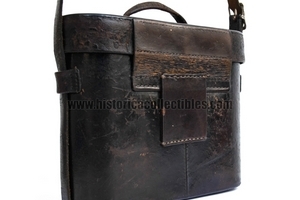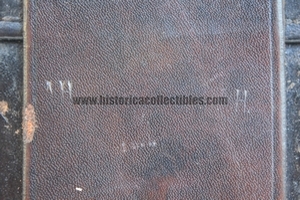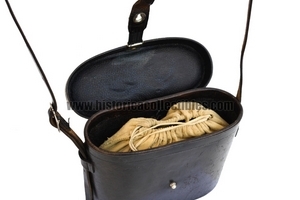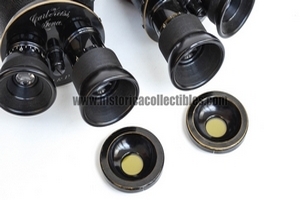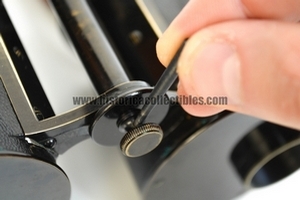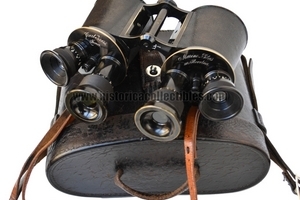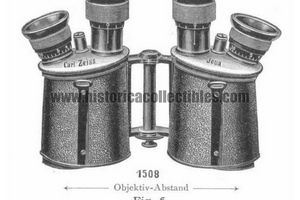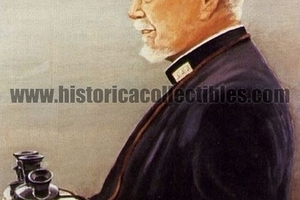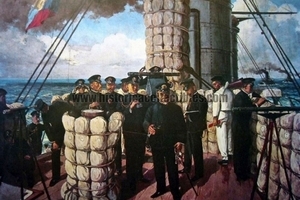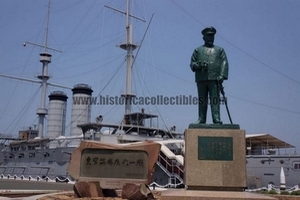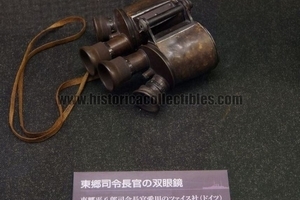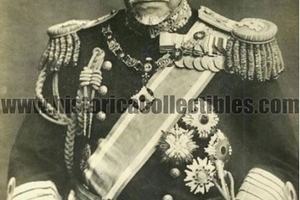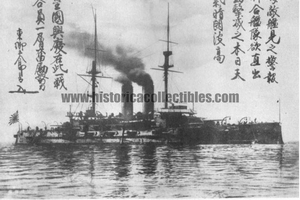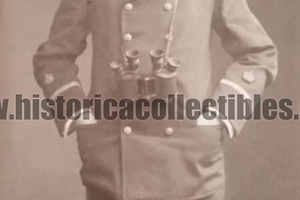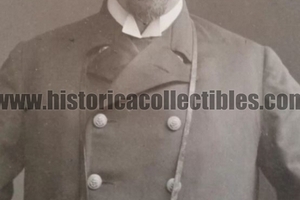Marine-Glas Carl Zeiss Jena mit Revolver 5x-10x D.R.P. mit Zubehör, Admiral Togo, circa 1896
Binoculars Mod. Marine-Glas with 5x and 10x Revolver, produced by Carl Zeiss Jena, from 1896 to 1904 in limited numbers. These extraordinary binoculars were designed by equipping them with an unusual and ingenious mechanism.
Equipped with 2 rotating bases with two eyepieces placed above each of them, it allowed to magnify the image from 5x to 10x simply by rotating the bases, choosing the desired magnification (hence the revolver definition: rotate-turn). This technological innovation was developed and implemented with the support of an equally ingenious invention, such as the prism.
Despite its small size, its weight reaches around 1300 grams, also due to its sturdy structure made entirely of brass.
The history of these exceptional and practically unobtainable binoculars has distant roots. In fact, it became famous thanks to Admiral Heihachiro Togo (東郷平八郎), Japanese National Hero, who used it when, in command of the flagship Mikasa, during the Russo-Japanese battle between 1904 and 1905, the Japanese fleet destroyed three quarters of the Russian Baltic Naval Fleet. Only in 1925, when the ship was moored in the port of the city of Yokosuka to be destined for memorial use, it was possible to observe among Admiral Togo's personal objects, these extraordinary binoculars, which are indelibly linked to his image, so much so that be represented on period paintings, as well as in the famous bronze statue dedicated to him placed in front of the Mikasa Ship.
In addition to Admiral Heihachiro Togo (東郷平八郎), Kaiser Wilhelm II King of Prussia and Kaiser of Germany also owned these binoculars.
Only a few specimens are known to exist. There is its very rare original leather case with shoulder strap and its strap and on the back of the case the leather loop for the belt, as well as a deerskin suede pouch to provide the binoculars with greater protection inside.
Carl Zeiss takes its name from its founder, Carl Zeiss, who on November 17, 1846 chose the small town of Jena, in Thuringia, as the location for his precision optical equipment factory. Thanks to the severe quality control that Carl Zeiss imposed on his products, going so far as to personally destroy the microscopes that did not pass the tests, the newly formed Zeiss became the official supplier of the University of Jena and received the gold medal of the industrial exhibition in 1861 of Thuringia as the best research instrument produced in Germany, awarded to the Stand I microscope of 1857.
In 1866 the thousandth microscope was produced and the name Zeiss became known throughout European scientific circles. Thanks to studies on the Porro prism, in 1893 Abbe patented double prism binoculars, which accentuated the perception of depth. The mass production of Zeiss binoculars began in 1894, already at the beginning of the twentieth century more than 30,000 were made, at the beginning of the First World War the quota had risen to 500,000 and, at the end of the Second World War, 2,260,000 were produced binoculars for the civil and military market. Models were made starting from 4x11 mm to 12x40 mm, up to real giants such as the 80 mm and 100 mm. Thanks to studies conducted on the perception of light in low light situations, it was demonstrated that the average dilation of the pupil in an adult is approximately 7 mm. For this reason, the 7x50 mm model was introduced in 1910 and remained on the market until 1917 with few changes to the materials used.
In 1926, following the post-war crisis of the First World War with the Treaty of Versailles which bankrupted many important German companies, Zeiss purchased "C.P. GOERZ" and founded Zeiss Ikon in 1926.
In 1937 Zeiss had commercial contacts and factories in more than 29 countries around the world. From '33 Zeiss acquired interest from the Nazi regime, which balanced production towards military instruments. It successfully produced binoculars with wide-angle optics for military use, pressure-resistant optical systems for U-boats, periscope binoculars for targeting tanks. Furthermore, Zeiss cameras were mounted on the V2s for remote sensing operations of the English coasts.
On 1 November 1935, Zeiss, in the figure of Alexander Smakula, patented a process for the treatment of optical glass with extraordinary results in terms of light transmission. Remained a military secret until 1939, it was adopted on binoculars to reduce ghost images and internal reflections. During the Second World War, there were numerous bombings against the Zeiss factories.
Jena was bombed several times by the Allies starting in 1944. Stuttgart was razed to the ground, although the Contessa-Nettel factory suffered little damage. The bombing of Dresden, in addition to devastating the city, also caused considerable damage to the Zeiss Ikon headquarters. On April 13, 1945, American military forces entered Jena, surprising themselves that the bombing had not caused any significant damage. The main planetarium was in ruins, while the factories remained operational.


